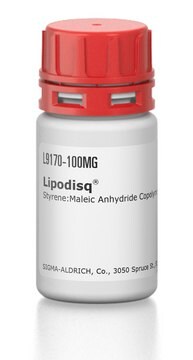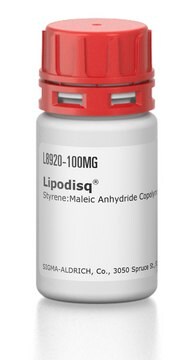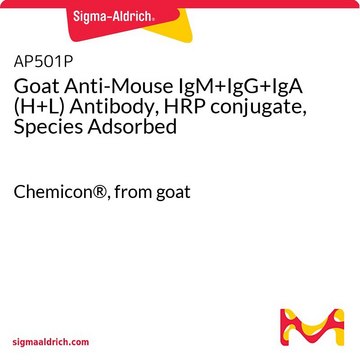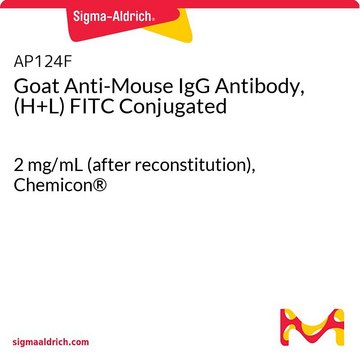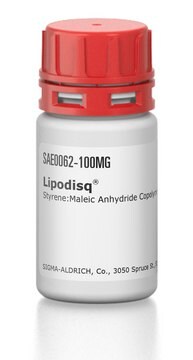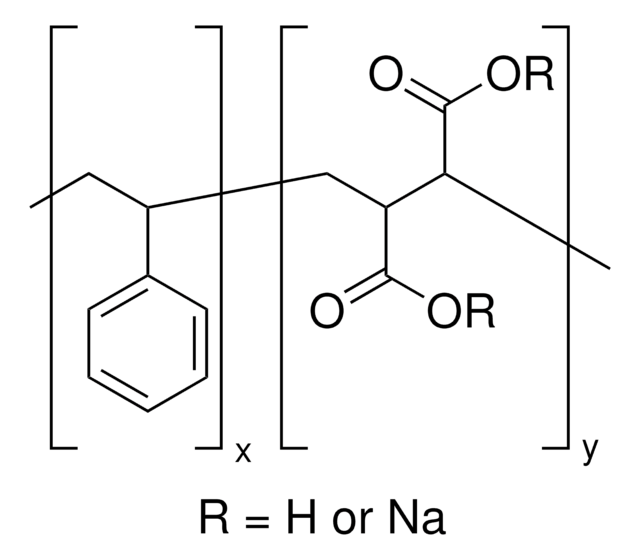L9045
Lipodisq®
Styrene:Maleic Anhydride Copolymer 3:1
About This Item
Recommended Products
biological source
synthetic
form
powder
storage temp.
room temp
Looking for similar products? Visit Product Comparison Guide
Related Categories
General description
Application
Functional pH range: 6.0 - 9.0
Biochem/physiol Actions
Legal Information
related product
Storage Class Code
11 - Combustible Solids
WGK
WGK 3
Flash Point(F)
Not applicable
Flash Point(C)
Not applicable
Regulatory Listings
Regulatory Listings are mainly provided for chemical products. Only limited information can be provided here for non-chemical products. No entry means none of the components are listed. It is the user’s obligation to ensure the safe and legal use of the product.
JAN Code
L9045-BULK:
L9045-VAR:
L9045-100MG:
Choose from one of the most recent versions:
Already Own This Product?
Find documentation for the products that you have recently purchased in the Document Library.
Our team of scientists has experience in all areas of research including Life Science, Material Science, Chemical Synthesis, Chromatography, Analytical and many others.
Contact Technical Service
